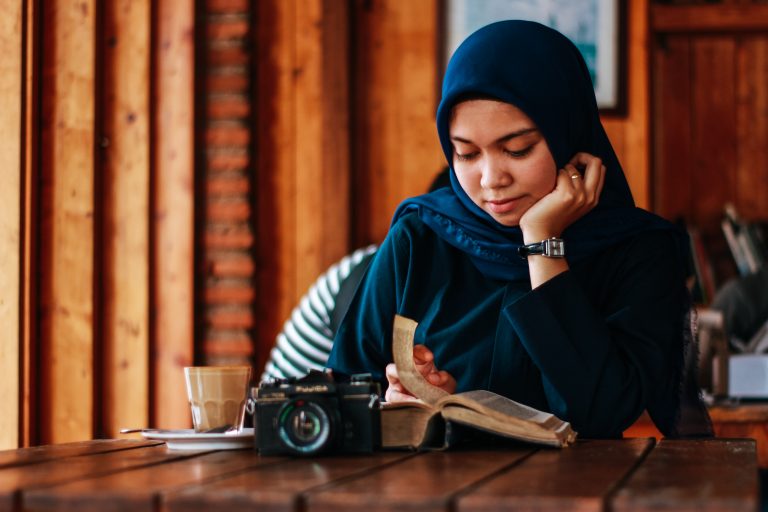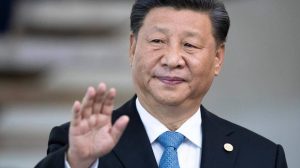Late last month, a high school teacher in the Indonesian province of Yogyakarta reportedly forced a female Muslim student to wear the hijab – veils worn by Muslim women – causing her to become anxious and depressed.
As a response, the province’s government recently suspended the school’s principal and three teachers involved in the incident.
A 2021 report from Human Rights Watch shows that since 1990, there have been a growing number of national and regional laws regulating uniforms for Muslim girls and women in Indonesia’s education system.
The country’s National Commission on Violence Against Women (Komnas Perempuan) has also criticised these clothing standards, saying they might propagate gender bias and misogyny.
These Islamic clothing standards, however, are often seen as symbols of morality and social piety.
Islamic politics play a huge role in shaping hijab and uniform regulations in Indonesian schools, and also the social contexts that affect how these policies are implemented in the education sector.
The reality of Muslim attire in schools
To understand how Indonesia’s political climate affects hijab rules in schools, one can start by looking at the country’s 2014 ministerial regulation that govern school uniforms nationwide.
One section of the regulation states:
Muslim attires for female students are worn according to their personal beliefs and should comply with the predetermined type, model, and colour, to be used in academic activities.
A quick glance at the above phrasing shows that there seems to be no problem – female Muslim students are not compelled to wear “Muslim attire”.
Not only that, from a political perspective, the ministerial regulation was born from the government’s attempt to prevent discrimination against female Muslim students in regions such as Bali, where they are a minority.
The then education minister, Muhammad Nuh, said the law was designed to protect the religious expression of female Muslim students. It was intended to give them space to express their faith through the choice to wear, or to not wear, hijabs and other forms of Islamic attire.
However, according to reports from the National Commission on Violence Against Women and Human Rights Watch, these regulations are often interpreted differently by schools. Education institutions often see it as a lawful basis to “encourage” the use of hijabs among female Muslim students who have yet to wear them.
The ministerial regulation, for instance, says that school uniforms should “strengthen national identity”, and cultivate discipline and state obedience among students.
This spirit is what gives room for schools to establish policies and rules that conform with regional contexts – and in turn the dominant political narrative.
As regions in Indonesia increasingly see Islamic attire as symbols of morality, many schools then push female students to wear hijabs. We saw this in the recent case in Yogyakarta, and even targeted non-Muslim students such as in the 2021 incident in West Sumatra.
How did Indonesia arrive at this point?
Islamic politics in the education sector
The use of hijabs as a representation of Islamic identity in the education sector is tightly related to the revival of Islamic politics in the global, national, and local stage.
From 1965 to 1985, the strained relation between the Indonesian New Order government and numerous Muslim groups, not to mention the state’s hostile attitude toward Islamic politics, resulted in the ban of hijabs in all public schools.
Students who wore hijabs were met with suspicion, intimidated by teachers and even the military, and were often threatened with expulsion.
The government’s hostility was in turn met with resistance – primarily from the Indonesian Council of Ulema (MUI), the Indonesian Islamic Propagation Council (DII), and the Islamic social organisation Muhammadiyah.
This resistance intensified after the 1979 Iranian Revolution. Iran’s decision to make the hijab compulsory for all women in the country inspired many female Indonesian Muslims.
At the time, the hijab was seen as a symbol of rebellion against the West, a social instrument to combat “moral degradation”, and a form of opposition against the domination of Western politics, economy, and culture. This symbol of being part of the global Muslim “imagined community” then became the foundation of the “hijabi movement” in Indonesia.
This movement then spread even further in Indonesian education, particularly universities, throughout the 1980s. This was thanks to the advocacy of a number of Islamic organisations in many campuses across Indonesia.
The presence of the Muslim Brotherhood (Ikhwanul Muslimin) in Indonesia, for instance, gave rise to political activism in notable campuses such as Universitas Gadjah Mada (UGM) in Yogyakarta; Universitas Brawijaya in Malang, East Java; Universitas Indonesia in Jakarta, and the Bogor Agricultural Institute (IPB) in West Java.
The Indonesian Muslim Students (PII) also developed advocacy strategies targeted at Muslim students in numerous mosques and cities, including the Mujahidin Mosque in Bandung and the Syuhada Mosque in Yogyakarta.
Then, from 1991 to 1998, the tension between the New Order government and Muslim groups started to thaw. These massive Islamic movements succeeded in repairing political relations with the government and nationalist-secular factions.
It resulted in the Ministry of Education passing a 1991 decree that finally allowed hijabs and Muslim attire in pubic schools. Not only that, the movements also strengthened Islamic values within Indonesian society.
The use of hijabs among students in the 1990s became further widespread as the presence of Islamic clubs or organisations, known as rohis, continued to grow within schools. Wearing the hijab in this period was seen as a symbol of Muslim piety, rebirth (hijrah), and identity.
As the Reformation Era ushered in 1998, democratisation in Indonesia gave even more room for the rise of Islamic politics and religious expression in the public sphere.
The significance of hijabs in post-1998 Indonesia then experienced a shift. Religious anthropologist Nancy Smith-Hefner states that the hijab has grown not only to symbolise individual interpretations of Islam, but also as a lifestyle, trend, and a form of social control when interacting with the opposite gender.
A nation fractured
Two decades after the 1998 Reformation, the use of hijabs in schools and campuses is still entrenched in political debate. This reflects in the tension between conservative-fundamentalist Islamic groups, and nationalist-pluralist and mainstream Islamic groups such as Nahdlatul Ulama (NU).
The battle for how the hijab should be regulated in schools shows how social cohesion within Indonesian society continue to erode – particularly as a consequence of sharpening political polarisation after the emergence of democracy and free speech at the end of the 20th century.
The government, civil society, schools, students, parents, and Muslim groups in Indonesia must start to cultivate dialog to bridge these differences.
It is vital for Indonesia’s education sector to ensure access and opportunity for various groups within society to express their choices and interests – including students and the faculty’s decision to wear, or to not wear, the hijab.
Source: The Conversation




















